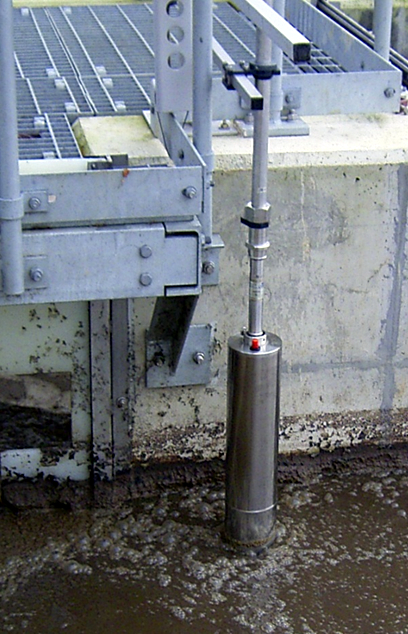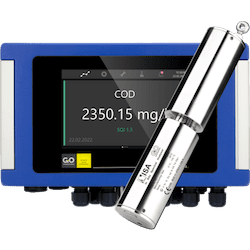In-Situ Measurement In Waste Waters For Low Cost Of Ownership
No pumps, No pipes, No pretreatments, No cabins, Rapid install & Low maintenance
In-situ Ammonia Analyser PBS
The PBS ammonia monitor is a well established and widely used Ammonia Analyzer, suitable for final effluents and mixed liquors in ASP's. It is auto calibrating, self cleans by caustic flush, and logs all the results and calibration data in its memory. Consequently the results are audit-able for greater piece of mind.
Installation takes typically 2 hrs. Routine maintenance consists primarily of topping up reagents 1/month.
In-situ ISE Sensor AmNiSys
AmNiSys is a multi-electrode in-situ ISE sensor. It is a simpler, cheaper system than NH3Sys, but does not include logging or autocal functions. The unit will however operate well in crude and settled sewage. Typical electrode combinations are: NH4, NO3, CI, K, pH.
The new version of the AmNiSys probe is aluminium construction and comes with Ammonia, temperature and a combination reference/pH electrode - providing three useful parameters as standard. You may add Nitrate and other parameters including some to monitor known interferences. If you fill one probe with electrodes (each probe will take 4), you can simply add another probe and keep adding more parameters...
In-situ Nitrate/Organics detection
GoSys-ISA is a UV-VIS multi purpose spectrometer. Different substances and mixtures may be analyzed continuously, once calibrated against site samples. The calibration software is "open access" and is relatively easy to use, allowing user customization.
The sensors optical path length is adjustable, accommodating different concentration ranges and turbidity. Specially coated optical lenses enhance efficiency of the compressed at auto clean function. Only the optics are mounted in an interface module outside the test fluid, making it less vulnerable to damage & enabling high temperature operation (up to 110'C). Ideal for the food & pharmaceutical industry. Common parameters measured are: NO3, SAC, TOC, COD. Other absorbing chemicals may be measured after customised calibration.


